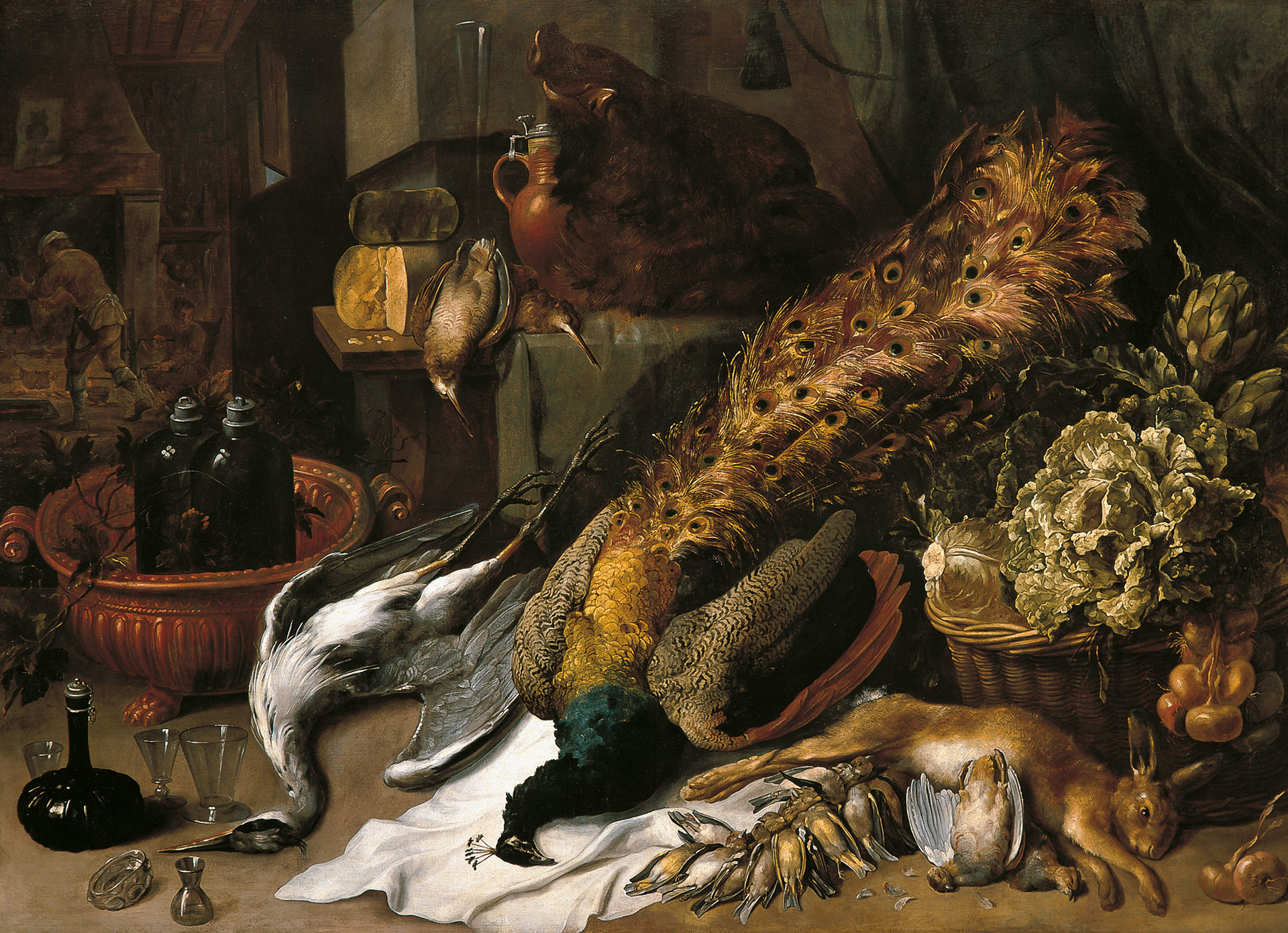
Frans Snyders (Antwerp, Belgium, 1579–1657)
Still Life with a Wine Cooler
1610-1620
WORK INFORMATION
Oil on canvas, 165 x 230 cm
Frans Snyders studied in Antwerp under Pieter Brueghel the Younger and was recognised as a master in 1602 when he joined the painters' guild. His first known painting of game, fruit and vegetables was produced the following year (formerly at Galerie Willems, Brussels, whereabouts currently unknown). On the recommendation of Jan Brueghel, who had come back from Italy as the protégé of Cardinal Borromeo, Snyders travelled to Milan and Rome in 1608 and returned in July of the following year. He soon began his collaboration with Rubens—The Recognition of Philopoemen (1610/1612, Museo del Prado)—specialising in the depiction of dead animals and fish as well as fruit and vegetables. Although he collaborated with other masters, most of his large-format works are independent creations. He preferred to paint still lifes with a cook or market vendors, sometimes with domestic animals scrabbling among the foodstuffs.
Much later he produced other works devoted primarily to live animals: beasts fighting, dogs hunting, Aesop's fables and flocks of birds, like the many he painted for the Tower of La Parada in 1636–1638, occasionally with landscapes by Wildens.
Snyders's early works reveal the influence of Pieter Aertsen and Joachim Beuckelaer in the accumulation of elements, high-angle perspective, background scenes and varied palette, tendencies undoubtedly reinforced by his discovery in Italy of the still lifes painted by Passerotti and the Campi family.
In general, the elements and their arrangement in Still Life with a Wine Cooler are close to Snyders's early style. The small scene of a couple cooking in the background comes from Aertsen and Beuckelaer, although as late as 1636 we find it in the work of Adriaen van Utrecht (Still Life with Parrot, Musées Royaux des Beaux-Arts, Belgium). The table with cheeses, tankard and extremely tall glass recall the banquets painted by Osias Beert and Clara Peeters, although this quickly disappeared from Snyders's repertoire. The intense chiaroscuro spread across various parts of the painting does not appear in later works, but the diagonal composition marked primarily by the peacock would remain a constant in his oeuvre. The same fowl, as well as the boar's head, cabbage and little birds, is repeated in several of the Flemish artist's paintings. One of the most striking objects is the gadrooned, claw-footed wine cooler, also painted by Gaspar van den Hoecke in 1618 (Lazarus at the Rich Man's Table, whereabouts unknown, preserved in a photograph). The strangest part is the arrangement of pieces on the floor in the foreground, but the high viewpoint, responsible for a few flaws in perspective, can be seen in his very rare works from the first decade of the century.
Finally, there are surprising number of similarities—the figured scene, wine cooler, boar's head and peacock, for instance—between this work and the panel Taste, signed and dated in 1618 by Jan Brueghel (Museo del Prado), with figures painted by Rubens. Considering the relationship that existed between Brueghel and Snyders, the former may have found inspiration in the work of the latter, or Snyders might even have participated in the making of his mentor's panel.
The inscription that appeared after recent cleaning—"David Teniers junior / Fecit 1676"—is undoubtedly apocryphal. It bears no resemblance to the numerous pieces signed by Teniers (Antwerp, 1610 – Brussels, 1690), who worked with smaller formats, never made works of this type (which had fallen out of fashion by his time) and had achieved enormous prestige. [José Manuel Cruz Valdovinos]

